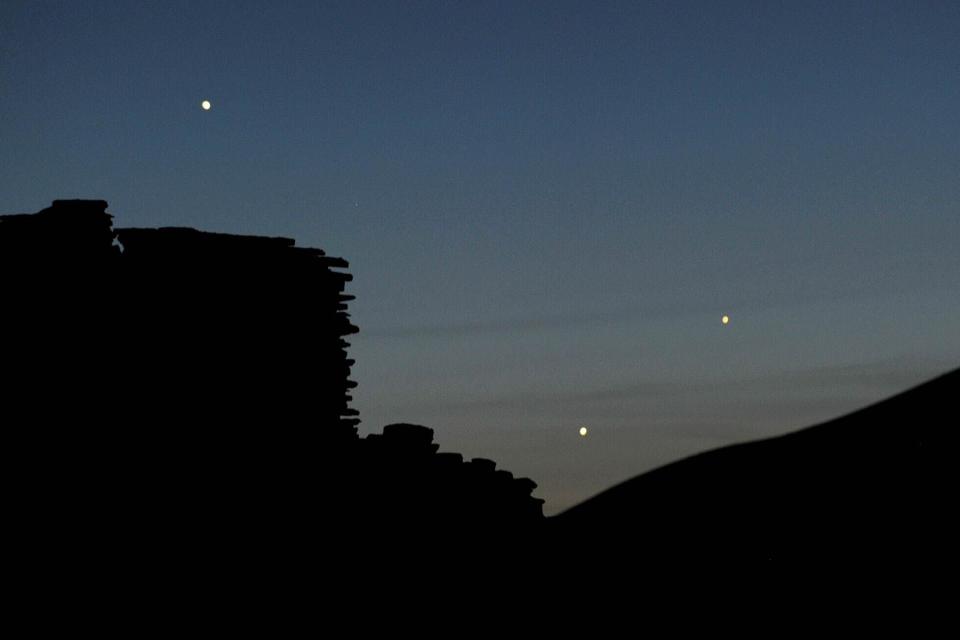Venus and Mercury Won’t Be This Close Until 2024 — How to See Them Both Tonight
And if you stay out long enough, you may be able to see Jupiter and Neptune, too.

Stan Honda/Getty Images
The planets Jupiter (L), Venus (C) and Mercury (R) are seen in an unusual conjunction setting over the Wupatki pueblo ruin on May 24, 2013 at Wupatki National Monument north of Flagstaff, Arizona.If you thought the year’s space events were over, think again. Just after sunset tonight, Venus and Mercury will appear within 1.5 degrees of each other above the southwest horizon.
The planets won’t be this close again until 2024, according to EarthSky.org.
Grab your winter coat and stargazing binoculars — here’s how to see the conjunction of Venus and Mercury for yourself.
How can I see the conjunction of Venus and Mercury?
Venus and Mercury will meet in the southwest sky just after sunset on Wednesday. They’ll hover low to the horizon, so look for a viewing spot with minimal obstructions; a lake or a hilltop with vistas to the southwest horizon are ideal.
Mercury and Venus will appear only 1.5 degrees apart, with the smaller and dimmer Mercury on top and vibrant Venus (which is three times larger than the former) beneath it. With planets this close in the sky, it may look like a collision is imminent — but Mercury and Venus are far, far apart. According to NASA, the planets are separated by a distance of over 31 million miles.
What gear do I need to see the Venus-Mercury conjunction?
A telescope isn’t necessary for watching the Venus-Mercury conjunction; the field of view will be too narrow to see both planets in one frame, according to In-the-Sky.org. A good pair of stargazing binoculars will do the trick for up-close viewing; you can also see the duo with your naked eye.
Don’t miss the moon, Neptune, and Jupiter
Come for the Venus-Mercury conjunction, stay for the chance to see Neptune, Jupiter, and a waxing moon that same evening. According to the Sky Safari app, Jupiter will appear 8 degrees from the waxing-crescent moon, while Neptune will be a few degrees north of the moon. Jupiter will be bright and easy to spot with the naked eye; binoculars or a backyard telescope will enhance your views of Neptune, which appears as a tiny dot to the naked eye.
For more Travel & Leisure news, make sure to sign up for our newsletter!
Read the original article on Travel & Leisure.

